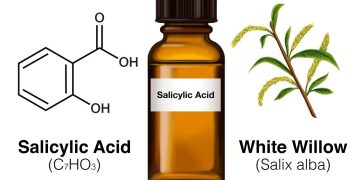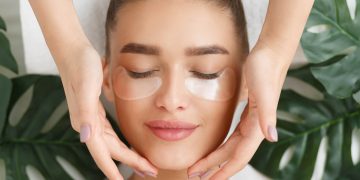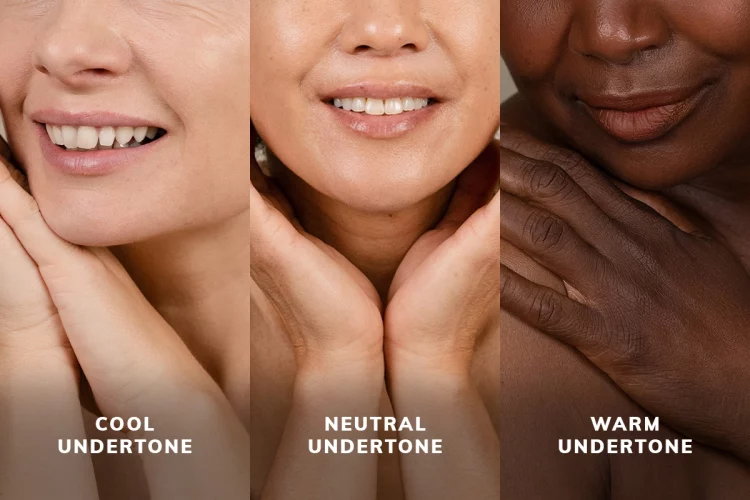Choosing the right foundation shade can be a daunting task. With an overwhelming range of shades, undertones, and formulations on the market, it’s easy to get lost in the process. But finding the perfect foundation for your skin isn’t just about matching a color—it’s about understanding your skin’s unique characteristics and how they interact with different products. In this article, we’ll break down everything you need to know to find the right foundation for your complexion, so you can achieve a flawless, natural look every time.
The Science Behind Foundation Shades
At the core of choosing the right foundation is understanding how skin tones and undertones work. While skin tone refers to the surface color of your skin (light, medium, dark), undertones are the subtle hues that lie beneath the skin’s surface and can affect how a foundation appears once applied.
There are three main undertones:
- Warm: A yellow, peachy, or golden hue.
- Cool: A pink, red, or blue hue.
- Neutral: A balanced mix of warm and cool tones, often appearing beige or olive.
Knowing your undertone is essential because even if a foundation matches your skin tone on the surface, it may look too orange or ashy if it doesn’t complement your undertones. The key is to find a foundation that enhances your natural coloring, blending seamlessly for a natural finish.
How to Determine Your Undertone
If you’re not sure whether you’re warm, cool, or neutral, there are a few simple methods to determine your undertone:
- Vein Test: Look at the veins on the inside of your wrist. If they appear greenish, you likely have warm undertones; if they appear bluish, you have cool undertones; and if they appear a mix of both, you have neutral undertones.
- Jewelry Test: Try on silver and gold jewelry. If silver flatters your skin more, you’re likely cool-toned. If gold looks better, you’re probably warm-toned. If both work equally well, you may be neutral.
- Sun Exposure: Consider how your skin reacts to the sun. Warm-toned skin tends to tan easily, while cool-toned skin may burn more quickly and rarely tans. Neutral undertones usually fall somewhere in between.
Why Your Foundation Might Not Look Right
There are several reasons why a foundation may not look perfect on your skin, even if you think you’ve found a close match:

- Incorrect Undertone Match: Even if the color is close, a mismatched undertone can make your foundation look off. For example, a warm-toned foundation on cool-toned skin can make you look overly orange or yellow.
- Oxidation: Some foundations oxidize after being applied, meaning they may darken or change color throughout the day. This is especially common in foundations with higher levels of oil or alcohol.
- Lighting: Testing foundation in artificial or store lighting can be misleading. Natural daylight is the best way to see how the foundation truly looks on your skin.
Tips for Finding the Perfect Shade
Now that you understand the basics of skin tone and undertones, let’s dive into practical tips for finding the perfect foundation shade.
1. Test Foundation on Your Jawline or Neck
When testing foundation, avoid applying it to your hand or wrist. These areas don’t match your face’s tone. Instead, try applying a small amount of foundation along your jawline or neck—this will give you a better idea of how the shade will blend with both your face and neck.
2. Swatch Several Shades
Don’t settle for the first shade you test. Most people fall into a range of tones, so it’s helpful to test a few shades within that range. Blend the foundation into your skin and wait a few minutes to see if the color adjusts or oxidizes.
3. Consider the Season
Your skin tone can change depending on the season. In the summer, you may get a tan, so you might need a darker shade. In winter, when you’re less exposed to the sun, you may need a lighter shade.
4. Use Shade-Finding Tools
Many brands and beauty retailers now offer online tools that can help you match your foundation shade. These tools typically ask for a photo or a few details about your skin to recommend shades. Though they’re not always perfect, they can be a good starting point.
5. Look for Adjusting Products
If you find that you have difficulty finding the right foundation shade, there are products designed to adjust the color of your foundation. A color-correcting primer or a white foundation mixer can lighten a foundation that’s too dark, while a darker mixer can deepen a foundation that’s too light.
Foundation Formulas: What Works for You?
Once you’ve found your shade, the next step is choosing the right formula for your skin type. Not all foundations are created equal, and the right formula can make a huge difference in the way your makeup looks and feels throughout the day.
- Matte Foundations: Ideal for oily or combination skin, matte foundations provide a long-lasting, oil-absorbing finish that helps control shine.
- Dewy Foundations: These are perfect for dry skin, giving a radiant and hydrated finish. Dewy foundations are typically more hydrating and can be a great way to combat a dull complexion.
- Buildable Foundations: If you prefer a natural look, a buildable foundation is your best friend. It allows you to control the coverage, from light to full, depending on your preference.
- Stick Foundations: Convenient and portable, stick foundations are ideal for on-the-go touch-ups. They can offer medium to full coverage, but you may need to blend them well to avoid a heavy look.
- Powder Foundations: Best for oily skin types, powder foundations provide a matte finish and help absorb excess oil. However, they can sometimes look cakey on dry skin.

Understanding the Finish: Matte vs. Dewy
The finish of your foundation is just as important as the color. While you might think about matte or dewy finishes purely based on your skin type, it’s also crucial to consider the look you’re going for.
- Matte Finish: This finish is more suitable for those who want a shine-free look. It works well with oily skin and provides a polished, smooth appearance.
- Dewy Finish: A dewy finish gives your skin a luminous, fresh look, which is ideal for those with dry or normal skin. It can make your skin appear more youthful and hydrated.
How to Make Your Foundation Last All Day
Even with the perfect shade, your foundation can start to fade or shift throughout the day. Here are a few tips to keep your foundation looking flawless:
- Use a Primer: A good primer helps to create a smooth base for your foundation, ensuring it adheres better and lasts longer.
- Set with Powder: After applying foundation, use a setting powder to lock it in place, especially in areas that tend to get oily.
- Setting Spray: A setting spray is a final step that helps to seal in your makeup and keep it looking fresh throughout the day.
- Blotting Papers: If you’re prone to oil or shine, carry blotting papers with you to absorb excess oil without disturbing your makeup.
Common Mistakes to Avoid
While finding the perfect foundation may seem straightforward, there are a few common mistakes that can throw off your complexion:
- Not Matching the Undertone: As we’ve already discussed, this can result in a foundation that looks orange or too ashy. Always prioritize your undertone.
- Choosing the Wrong Coverage: If you have acne or blemishes, you might be tempted to go for full coverage, but too much product can make your skin look cakey. Opt for a buildable foundation instead.
- Ignoring Your Skin Type: Choosing a foundation that doesn’t suit your skin type can lead to frustration. If you have dry skin, steer clear of matte foundations, and if you have oily skin, don’t go for overly hydrating formulas.
- Not Testing in Natural Light: Always check how your foundation looks in natural light, especially before committing to a purchase.
Conclusion
Finding the perfect foundation shade is an art, not a science. With the right knowledge of your undertones, skin type, and the products available, you can easily find a shade that enhances your natural beauty and makes your skin look flawless. Whether you prefer a matte finish, a dewy glow, or something in between, there’s a foundation out there that’s perfect for you.
Remember: It’s not about finding a “one-size-fits-all” product—it’s about discovering what works for you and celebrating the beauty of your natural complexion.












































